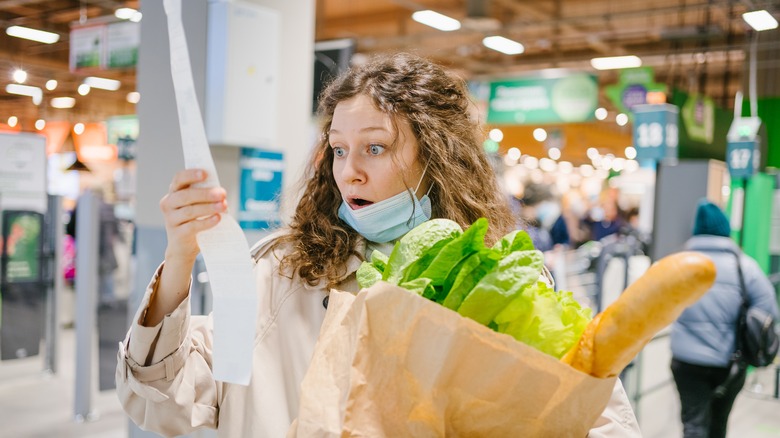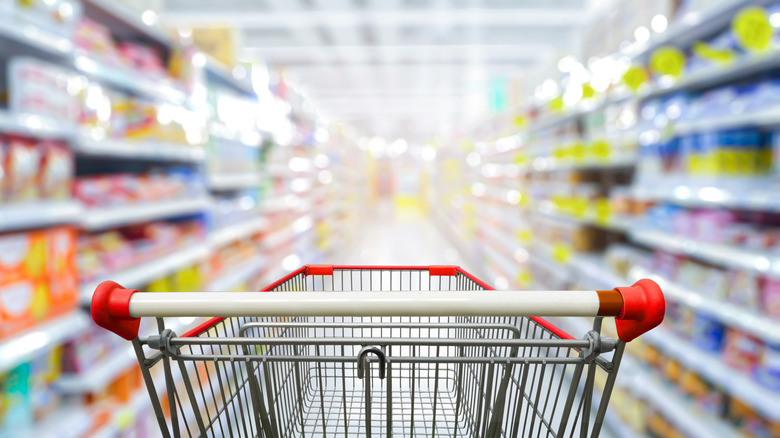What The Latest USDA Predictions Say About Food Inflation In The US?
It's old news at this point, but no less sour that inflation is gripping our economy and driving up prices on a number of items — from rent and furniture to food and electricity, via Forbes. In fact, food is where we see some of the biggest increases. Meat, including poultry, seafood, and eggs, jumped by 14.3% from May 2021 to May 2022. In that same period, fruits and vegetables shot up 7.8% in price.
As the New York Times points out, food inflation is caused by myriad factors, arising up and down the supply chain. Elemental factors, such as drought and damaging ice storms, have affected general production, while shortages in labor and increases in fuel prices have made it considerably more expensive to bring crops and livestock to market. Further exacerbating food inflation is the Russian invasion of Ukraine, which Fortune notes has further driven up natural gas prices and disrupted the global flow of critical fertilizers supplied by Russia.
How food inflation is hitting home
Domestically, the outlook on food inflation is less than rosy. New data released by the USDA shows that the Consumer Price Index (CPI) for food rose 8.3% between April 2021 and April 2022. More specifically, we've seen a 7.2% price increase in that same period for food purchased in restaurants and a 10.8% increase in food purchased at grocery stores and supermarkets.
To put this all into perspective, Successful Farming says that the projected food inflation rate for 2022 is the highest since 1981, the dawn of the Reagan presidency, and the grocery inflation rate is the highest since 1980. This is, in part, driven by surging poultry and egg prices brought on by the highly-contagious pathogenic avian flu that has affected over 38 million birds in the U.S.
Economist Dana Peterson, writing in CNN, says that food inflation is a particularly vicious form of inflation that disproportionately affects those already experiencing economic hardship. As early as January of 2022, a reported 42 million Americans were unable to afford to buy an adequate amount of food. These individuals typically come from food-insecure families that fall under the nationally poverty line, and are more often Black or Hispanic.
The key to curbing food inflation, Peterson posits, is more robust intervention by the Federal Reserve in raising interest rates, which, if done right, should slow our overactive economy and bring down prices on items across the board.

